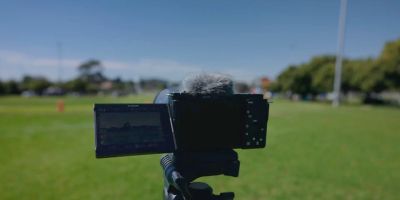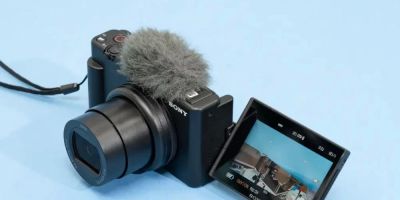Best Cameras for Capturing Architecture in Detail
Architecture photography is an art form that requires precision, attention to detail, and the right tools. Whether you're a professional photographer, an enthusiast, or simply someone who loves capturing the beauty of buildings, choosing the best camera for your needs is crucial. A camera that excels in architectural photography must deliver sharp images, accurate color representation, and the ability to capture intricate details without distortion. In this article, we will explore the best cameras for capturing architecture in detail, focusing on factors such as resolution, lens compatibility, and image quality. We will also provide recommendations to help you choose the best option for your photography style and budget.
1. Why the Right Camera Matters for Architecture Photography
When it comes to photographing architecture, the right camera can make a world of difference. Architecture photography often involves shooting large structures, intricate details, and wide angles, so having a camera with high resolution and the ability to handle different lighting conditions is essential. Additionally, architectural photographers frequently need to focus on sharp lines, geometric shapes, and straight angles, making a camera that minimizes distortion a priority. Let’s dive into the factors that make certain cameras more suited to architectural photography than others.
2. Key Features to Look for in a Camera for Architecture Photography
When choosing a camera for capturing architecture in detail, there are several factors you need to consider:
- Resolution: High resolution is essential in architecture photography to capture intricate details and allow for post-editing cropping without losing image quality. Cameras with higher megapixels (MP) can provide sharper, more detailed images.
- Lens Compatibility: The ability to choose the right lens is crucial in architectural photography. Wide-angle lenses, tilt-shift lenses, and prime lenses all have their uses. A camera system that supports a wide range of lenses will give you the flexibility you need to achieve your desired shot.
- Sensor Size: A larger sensor allows for better image quality, especially in low-light conditions. Full-frame sensors provide more dynamic range and less noise in high ISO settings, which is crucial when photographing buildings with natural lighting.
- Low-Light Performance: Many architectural shots are taken indoors or in settings with low light. A camera that performs well in these conditions can help you get crisp, detailed images without the need for a flash, which can sometimes create harsh shadows or highlights.
- Distortion Control: Architecture photography often involves shooting tall buildings or wide open spaces, and camera distortion can interfere with the accuracy of straight lines. Choosing a camera with advanced distortion correction features can significantly improve the quality of your shots.
3. Top Camera Picks for Architecture Photography
Now that we understand the key features, let's take a look at some of the best cameras on the market for capturing architecture in all its intricate detail. Here are our top picks:
Canon EOS R5
The Canon EOS R5 is an excellent choice for architecture photographers due to its 45MP full-frame sensor, which allows for stunning detail and resolution. The camera also features excellent low-light performance, a wide dynamic range, and an impressive autofocus system. Its robust lens selection, including tilt-shift lenses, makes it highly versatile for architectural shots. The EOS R5 is perfect for both professionals and enthusiasts looking for a top-tier mirrorless camera.
Sony Alpha 7R IV
Another excellent choice for architecture photography is the Sony Alpha 7R IV. With a 61MP full-frame sensor, this camera delivers exceptional image quality and detail. The Sony Alpha 7R IV’s ability to handle high-contrast scenes and its wide dynamic range make it ideal for shooting buildings with varied lighting conditions. Additionally, its compact design and fast autofocus system make it a versatile and reliable option for architecture photographers.
Nikon D850
If you prefer a DSLR, the Nikon D850 is a top contender. With its 45.7MP full-frame sensor, this camera captures incredibly detailed images with vibrant colors. Its robust build quality makes it perfect for outdoor photography, while the wide selection of Nikon lenses allows for a range of architectural shots, from wide-angle views to close-up details. The D850 also offers great dynamic range and low-light performance, making it a versatile choice for architectural photography in different environments.
Fujifilm GFX 100S
For those seeking the best in medium format cameras, the Fujifilm GFX 100S is a stellar option. It features a 102MP sensor, providing exceptional detail that can capture the smallest elements of architectural design. The medium format sensor offers a unique depth of field and resolution that makes it ideal for large-scale architectural work. Although it is pricier, it delivers unparalleled image quality, making it a great choice for professional photographers who require the highest resolution and image clarity.
4. Lenses for Architectural Photography
While the camera body is important, the lens plays an equally crucial role in architectural photography. A wide-angle lens allows you to capture the full scope of a building or a room, while a tilt-shift lens enables you to control perspective and eliminate distortion, which is particularly important in architectural photography. Let’s take a look at some lenses that pair well with the cameras mentioned above:
- Canon RF 15-35mm f/2.8L IS USM: A fast, wide-angle zoom lens perfect for capturing expansive architecture shots without distortion.
- Sony FE 12-24mm f/2.8 GM: A sharp, wide-angle lens for the Sony Alpha series, offering great clarity and minimal barrel distortion.
- Nikon AF-S NIKKOR 14-24mm f/2.8G ED: A versatile wide-angle lens for the Nikon D850, ideal for capturing the full scale of architecture with sharpness and precision.
- Fujifilm GF 23mm f/4 R LM WR: A wide-angle prime lens for the Fujifilm GFX series, designed specifically for medium-format cameras to produce stunning detail and clarity.
5. Photography Techniques for Capturing Architecture in Detail
Now that we’ve covered some of the best cameras and lenses for architectural photography, let’s look at a few techniques to improve your shots:
- Use a Tripod: A tripod helps stabilize your camera and ensures sharp images, especially when shooting in low-light conditions or with slower shutter speeds.
- Keep Lines Straight: To avoid distortion, make sure the camera is level and aligned with the building. Use a tilt-shift lens or software to correct any distortion.
- Control Lighting: Architectural shots can often benefit from soft, natural lighting. Early mornings or late afternoons provide the best light for shooting buildings with minimal shadows and highlights.
- Frame with Purpose: Focus on composition by highlighting architectural features such as doors, windows, or unique textures. Frame your shots to emphasize the structure's geometry and design.
6. Post-Processing for Architectural Photography
Post-processing is an essential part of architecture photography. Once you have captured your images, editing can help enhance the details and correct any minor distortions or exposure issues. Some tips for editing architectural photographs include:
- Correct Perspective: Use software like Adobe Lightroom or Photoshop to fix any lens distortions or perspective issues that may have occurred when shooting.
- Enhance Details: Increase sharpness and clarity to bring out the fine details in your photographs, such as textures and architectural features.
- Adjust Lighting: Fine-tune the exposure, contrast, and brightness to ensure the building's features are highlighted properly without overexposing or underexposing certain areas.
Conclusion
Choosing the best camera for capturing architecture in detail requires a balance of resolution, lens compatibility, and image quality. Whether you're a professional photographer or an enthusiast, the Canon EOS R5, Sony Alpha 7R IV, Nikon D850, or Fujifilm GFX 100S are all excellent choices for architectural photography. Coupled with the right lenses and photography techniques, these cameras will help you capture stunning images of buildings, from grand facades to intricate details. Remember, while the right equipment is essential, mastering your composition, lighting, and post-processing skills will elevate your architectural photography to the next level. Visit Photo Studio for the best camera equipment and expert advice to enhance your photography experience.
<> SEO Title: Best Cameras for Capturing Architecture in Detail SEO Keywords: best cameras for architecture photography, architectural photography, cameras for architecture, photography tips for architecture, best cameras for capturing details SEO Description: Explore the best cameras for capturing architecture in detail, including top camera recommendations and essential photography tips for architectural shots.




